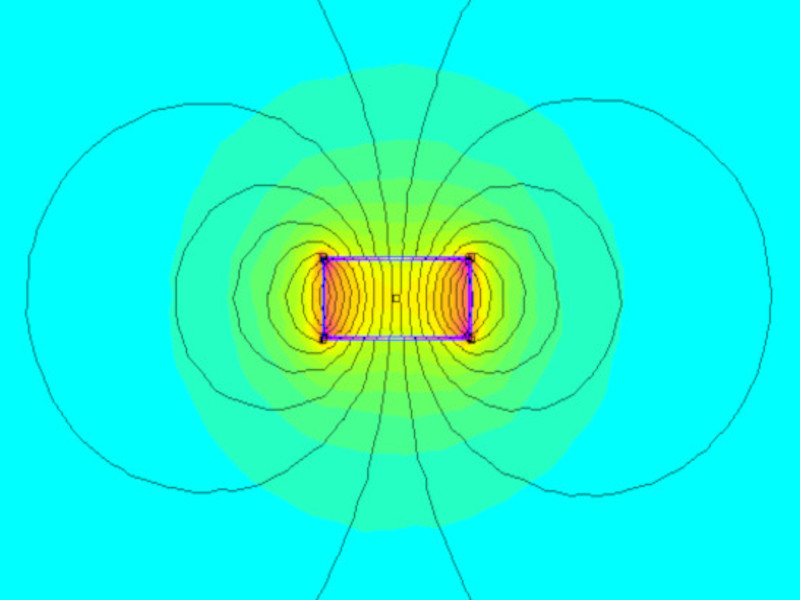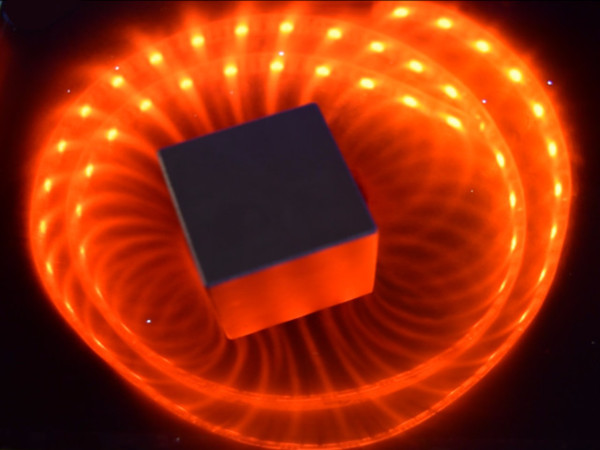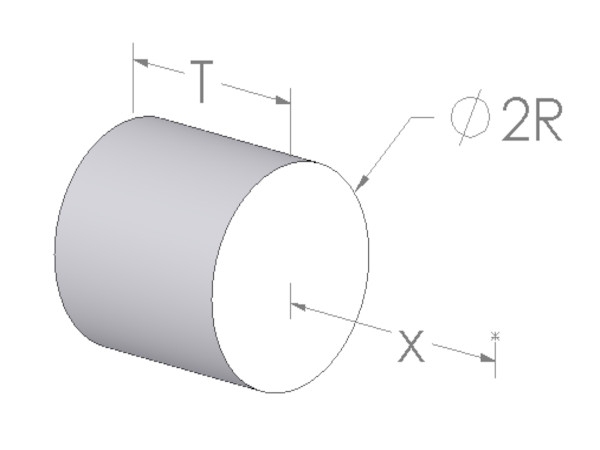Magnetic Fields
Magnetic fields 101: Understanding the basics
1. What is a magnetic field?
At its core, a magnetic field is an area around a magnet where magnetic forces are exerted. This field is invisible but can be detected using certain tools and materials. Magnetic fields are created by moving electric charges and are intrinsic to substances like iron, nickel, and cobalt.
How magnetic fields are created
Magnetic fields are typically produced in two ways: by magnetic materials and by moving electric charges. In magnetic materials, fields arise from the alignment of the magnetic moments of electrons within the material. In contrast, when electric current flows, such as in a wire, it generates a magnetic field around the wire. This relationship between electricity and magnetism is a fundamental principle of electromagnetism.
Visualizing magnetic fields
Although invisible to the naked eye, the presence and shape of a magnetic field can be visualized using iron filings. When sprinkled around a magnet, these filings align along the field lines, forming patterns that reveal the field's structure. The field is strongest at the magnet's poles, where the lines are most concentrated. Check out our Viewing Magnetic Fields blog article for ways to physically see magnetic fields.
Magnetic Fields in Everyday Life
Magnetic fields are not just theoretical or for advanced science. They are used in many aspects of modern life. Here are a few examples:
-
Compasses: A compass needle aligns itself with Earth's magnetic field, pointing approximately towards the geographic North and South poles, aiding in navigation.
-
Electronics: Many electronic devices, from smartphones to MRI machines, rely on magnetic fields for their operation.
-
Electric Motors and Generators: These devices convert electrical energy to mechanical energy (and vice versa) using magnetic fields.
Shop Neodymium Magnets
Shop rare earth neodymium magnets by shape.



2. Using simulations to see magnetic field differences per application
We are often asked about what the shape of a magnetic field looks like, and how it is changed by its surrounding environment. In our previous Viewing Magnetic Fields article, we looked at different ways to physically see magnetic fields. Below are a few screenshots taken from a magnetic FEA (Finite Element Analysis) software analysis. All pictures of magnetic fields are done simulating our D42 magnet.
-
Magnetic field in free space
The first simulated magnetic field shows a disc magnet in free space. This means that the magnet is not attracting to anything and not influencing or receiving the influence of any other materials. This is a theoretical benchmark and results will differ in the real world. Notice that a disc magnet has the highest gauss rating on the outside edges.
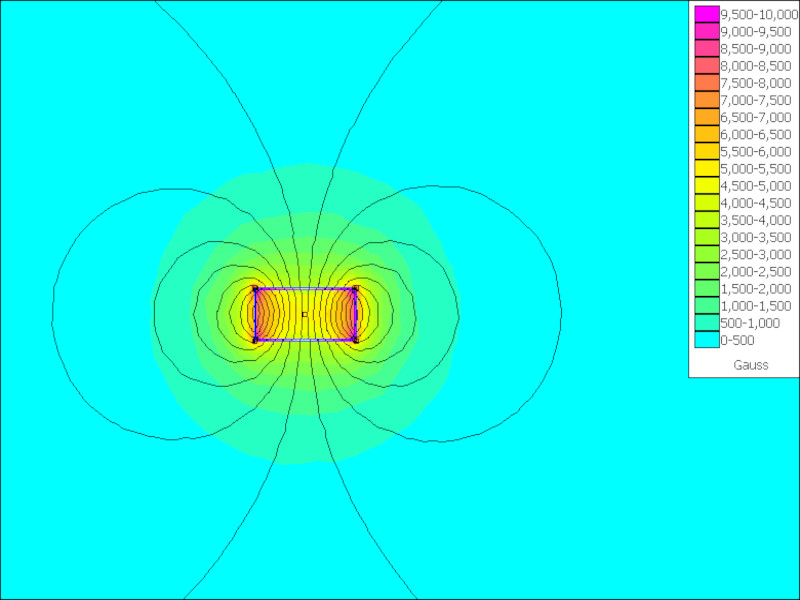
-
Magnetic field with magnet on steel
This simulation shows what a magnetic field would look like for a magnet for pull force case 1 which is attracting to a large piece of steel. You can see that the steel "absorbs" or more precisely, redirects the magnetic field lines back towards the opposite pole of the magnet. The strongest part of the magnet here is still around the edges, but the center has a higher gauss rating than the magnet in free space.
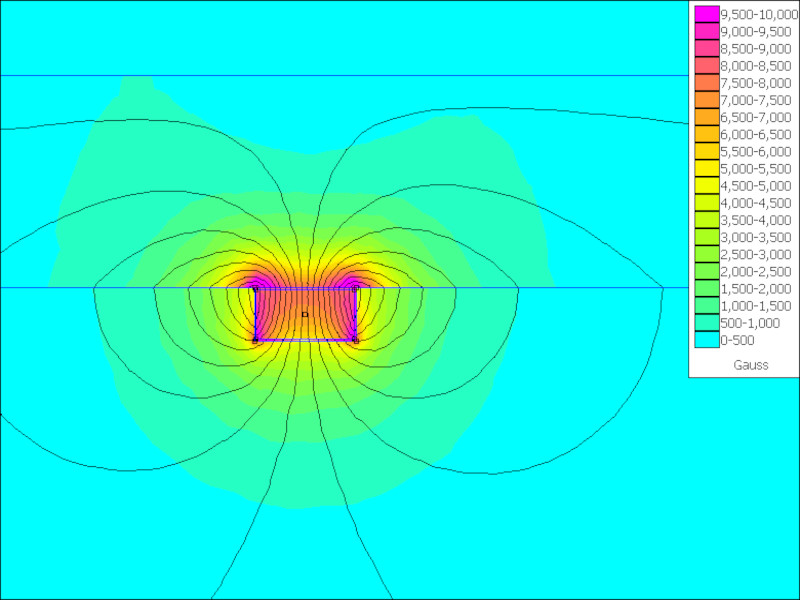
-
Magnetic field with magnet between steel
Here we see what a magnetic field would look like for for pull force case 2 which is a magnet between 2 large pieces of steel. Magnets that are thinner will tend to have a higher pull force case 2 as compared to case 1. With two pieces of steel sandwiching a magnet, the pull strength is spread out more evenly across the width of the magnet.

-
Magnetic field for a pair of magnets
This simulation showcases what two magnets look like if they are attracting to each other and is pull force case 3. In pull force case 3, the magnet gets full strength to another magnet of the same size with no gap and does not need to rely on the size or thickness of steel like pull force 1 and 2.
A gap between two magnets has a fairly even magnetic field and many people use a setup like this for experiments. You can use our gap calculator to estimate the gauss rating between two magnets.
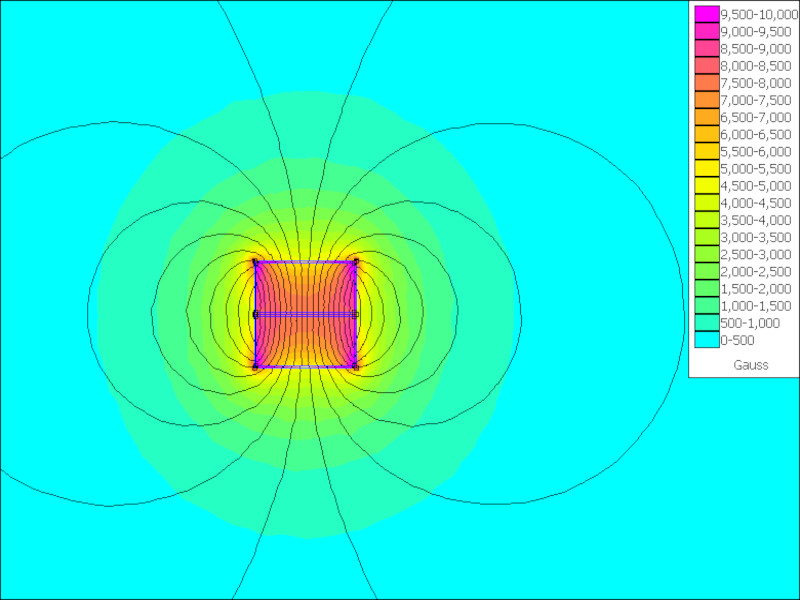
3. Attracting and repelling magnets
-
Magnetic field animated for attracting magnets
This animation shows two magnets attracting where the magnets start out at a distance and then move in to eliminate the gap. Notice how the magnetic field gets stronger as the magnets get closer to each other and how they are strongest when both magnets have no gap.
You can use our magnet calculator to estimate magnet strength for two magnets. If there is a gap, you can insert the gap into the distance field.
-
Magnetic field animated for repelling magnets
This animation shows two repelling magnets. Just like attracting magnets, the force gets stronger the closer the magnets get to each other. Two magnets pull each other together and are stable, but repelling magnets are not stable and need external forces to hold them steady. Learn more in our Electromagnetic Levitation article where we talk about ways you can stabilize magnets during levitation.

